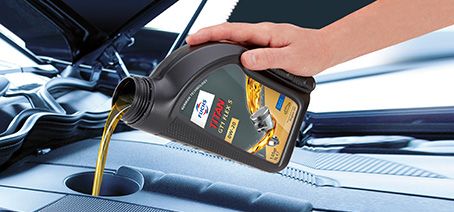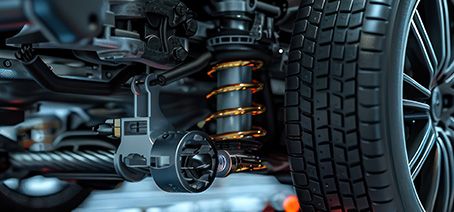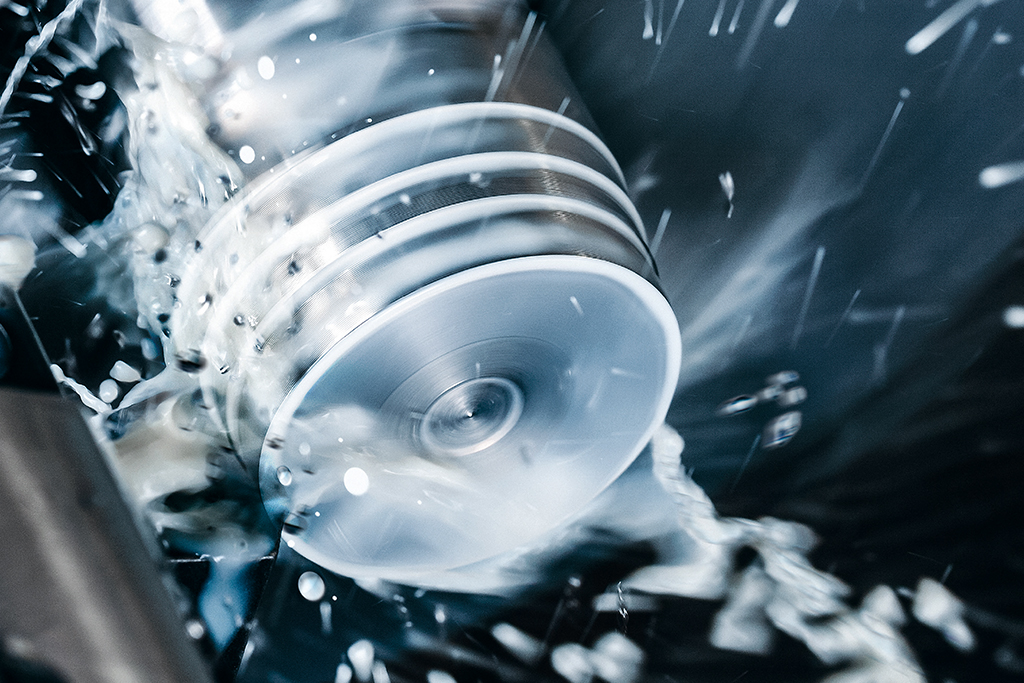FUCHS Blog
Discover more about the lubrication industry.
10 Steps to Hassle Free Soluble Cutting Fluid Management
There are many benefits to be gained from streamlining the handling of cutting fluids, everything from fewer unplanned stoppages to a longer service life for tools and machines. Follow these tips and you’ll considerably increase your chances of keeping production at a consistent high level.
1. APPOINT A PERSON RESPONSIBLE FOR CUTTING FLUID MANAGEMENT, who may cover the whole workshop, or maybe a number of people responsible for the content of only a few sumps, with this division of duties, it doesn’t always mean employing someone new. This is crucial to ensure a properly functioning system, and it reduces the risk of things getting forgotten. A cutting fluid manager should:
• Check that the fluid in each system is inside the target range for concentration, pH, tramp oil, bacterial growth (by dip-slide)
• Keep a record of this information in case it is needed – this information will come in handy if a quality or safety investigation must be carried out.
• Take corrective actions to maintain good fluid performance and keep the properties in target range. FUCHS can provide Chemical Process Management, either based at your site or for smaller workshops by visiting at intervals to perform these checks. Samples can also be provided to our main laboratory at set intervals. Ask us how we can help you manage the Fuchs products in use.
2. LABEL THE MACHINES, with the fluid in use, target concentration, target pH, and typical appearance. Different fluids may be used for different applications, (or the same fluid at a different concentration). Labelling the machines will reduce the risk of mixing products, or running with incorrect concentration which may compromise a fluid’s performance.
3. CHECK THE CONCENTRATION, ideally daily, but at least a couple of times a week, and compare to the target range for that system. The measurement may be taken by either refractometer, which is by far the easiest way, or by titration. Remember that both of these methods do not give a direct measure of concentration, the specific refractometer or titration factor will need to be applied for each product in use.
If the fluid concentration is too high it may produce more mess, increase the risk of skin problems and also increase cutting fluid consumption. Too low a concentration may result in bacterial and fungal contamination, corrosion and poor lubrication, which reduces the life span of the tools and cutting fluid.
4. CHECK THE PH of the fluid, at the same time as checking the concentration and compare to its target range in that system. This may be performed using an indicator stick or calibrated pH meter. Most cutting fluids have a pH of 9-9.6, but there are some exceptions, check the product literature. If the pH value decreases, the concentration may be too low, or there could be bacterial contamination. This can lead to corrosion problems and bad odours. Low pH generally comes hand in hand with low concentration and can be fixed by increasing the concentration of the soluble metalworking fluid to offer additional buffering (buffering is another way of saying pH stability). The refractometer factor and typical pH for each Fuchs soluble metalworking fluid can be found on the Technical Data Sheet, contact our technical department if you need more help.
5. TOP UP LITTLE AND OFTEN with an emulsion pre-mixed at around 1-2%. Daily top up will help to keep the system at the correct fill volume, and replace any losses caused by drag out or evaporation. If the concentration in the system has been found to be low, then top up concentration may be increased to boost the final concentration. Remember to re-set the top up concentration once the concentration is back inside target range.
FUCHS can provide equipment as part of a package which will automatically dose the correct volume of top-up emulsion at the correct concentration.
6. MINIMISE TRAMP OIL by using skimmers and separators. Any contaminating oil, which could be slide-way oil, corrosion preventive fluid, hydraulic oil, spindle oil, is known as tramp oil. Because bacteria thrive in the boundary layer between the tramp oil and the emulsion, tramp oil should be removed daily. Even the most robust emulsions can suffer deterioration when covered or contaminated by tramp oil.
Tramp oil is most easily removed using a skimmer or separator. It is also possible to roughly estimate the tramp oil content by measuring the free oil (visible oil level above the emulsion), although this method does not measure tramp oil that has already emulsified, a laboratory analysis would be required if this is a concern.
7. REMOVE SWARF REGULARLY, to keep the fluid in good condition. Small particles can promote the growth of bacteria and fungi. They also occupy space in the sump, which displaces the metalworking fluid, which means that there is not the full volume for effective heat dissipation in the fluid. Large particles can be continuously removed by a conveyor, or should be shovelled out daily, and small particles should be removed by filtration. Fuchs can provide ancillary equipment to filter emulsions, provide supplementary swarf removal systems and tramp oil removal systems.
8. MINIMISE STOPPAGES IN THE SYSTEMS, to avoid stagnation of the fluid. If stoppages must occur, remove tramp oil; raise the pH and concentration of the fluid towards the upper limit to offer the best chance of a worry free start-up. During longer periods of down time, such as the summer shutdown, a biocide may also be needed. Before any additions are made, a risk assessment / method statement needs to be performed and generated by a suitably trained person. Circulate the system regularly to keep the emulsion in good condition. Alternatively, during longer dormant periods, consider leaving tanks empty and treated with a suitable corrosion preventive.
FUCHS’ Fluid Technicians are trained in the use of biocides, contact us to discuss your needs, for treating full or emptied systems.
9. SCHEDULE MAINTENTANCE AND FLUID CHANGES. Maintaining regular cleaning operations, in-line with your production requirements as part of a planned maintenance schedule, will help to avoid unplanned, costly and disruptive fluid changes.
10. ALWAYS USE A SYSTEM CLEANER WHEN CHANGING THE FLUID to help ensure that the system is sterile, ready for a fresh fill of fluid. System cleaner is a water-soluble detergent and dispersant for emulsions and solutions. System cleaners kill bacterial and fungal growth, and also loosen microbiological film and sludge. System cleaners are only used in connection with a change of emulsion, rather than for regular emulsion maintenance.
FUCHS can perform a fluid change in a system, even if day-to-day the fluid is managed in-house, freeing up your staff to perform other shut-down tasks or improvements.
Ask us how we can help you with complete, or parts of your Chemical Process Management.











